About Numiis / Numis DB
The numismatic database project is designed to provide all information any coin collector or numismatist would need regarding a coin, medal or note of interest.
Coins / United States of America / 5 Cents Nickel / Half Dime
The buffalo nickel value ranges from $1 to $100,000 depending on the quality of the coin, which year it was minted in, which mint it was manufactured at, and its strike type.
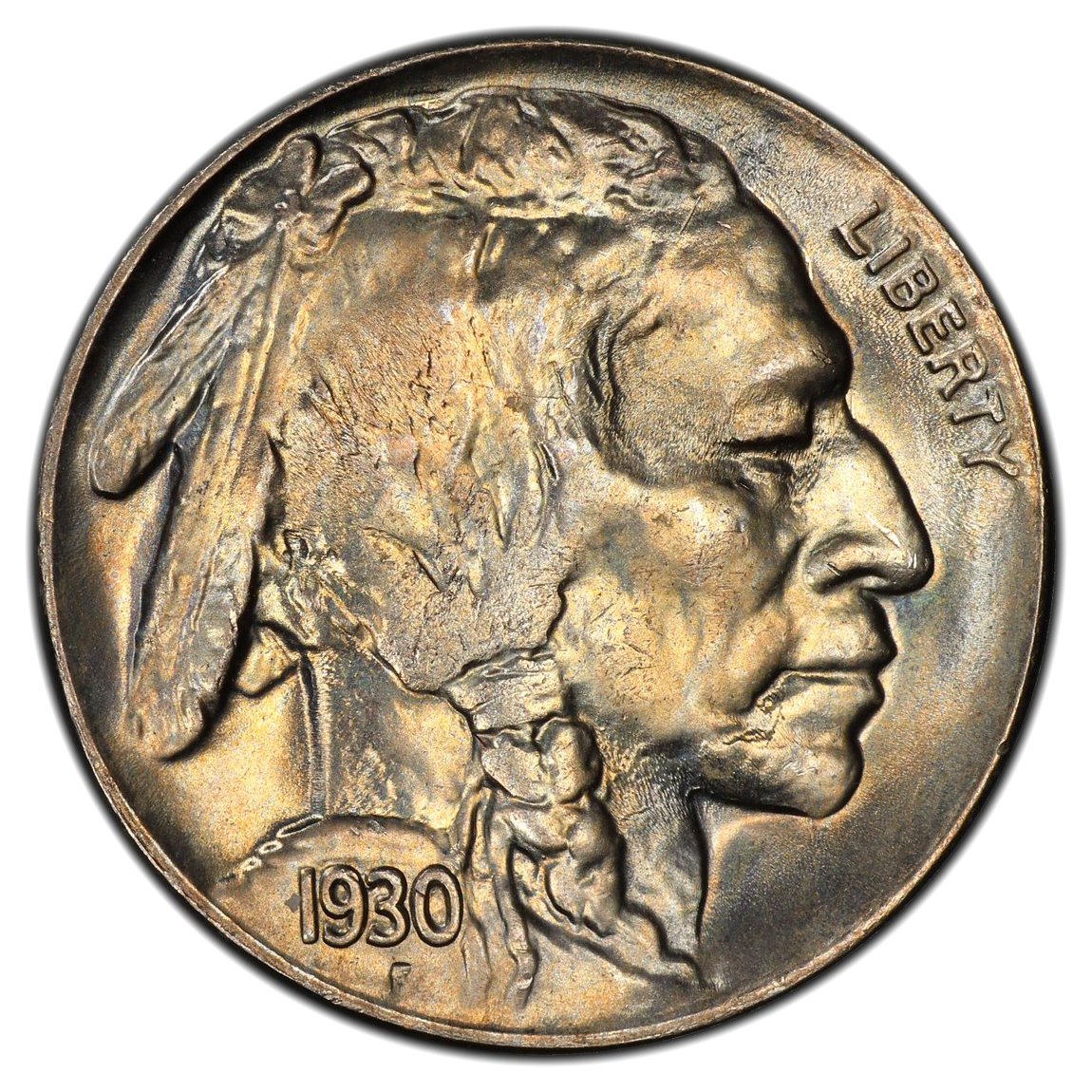
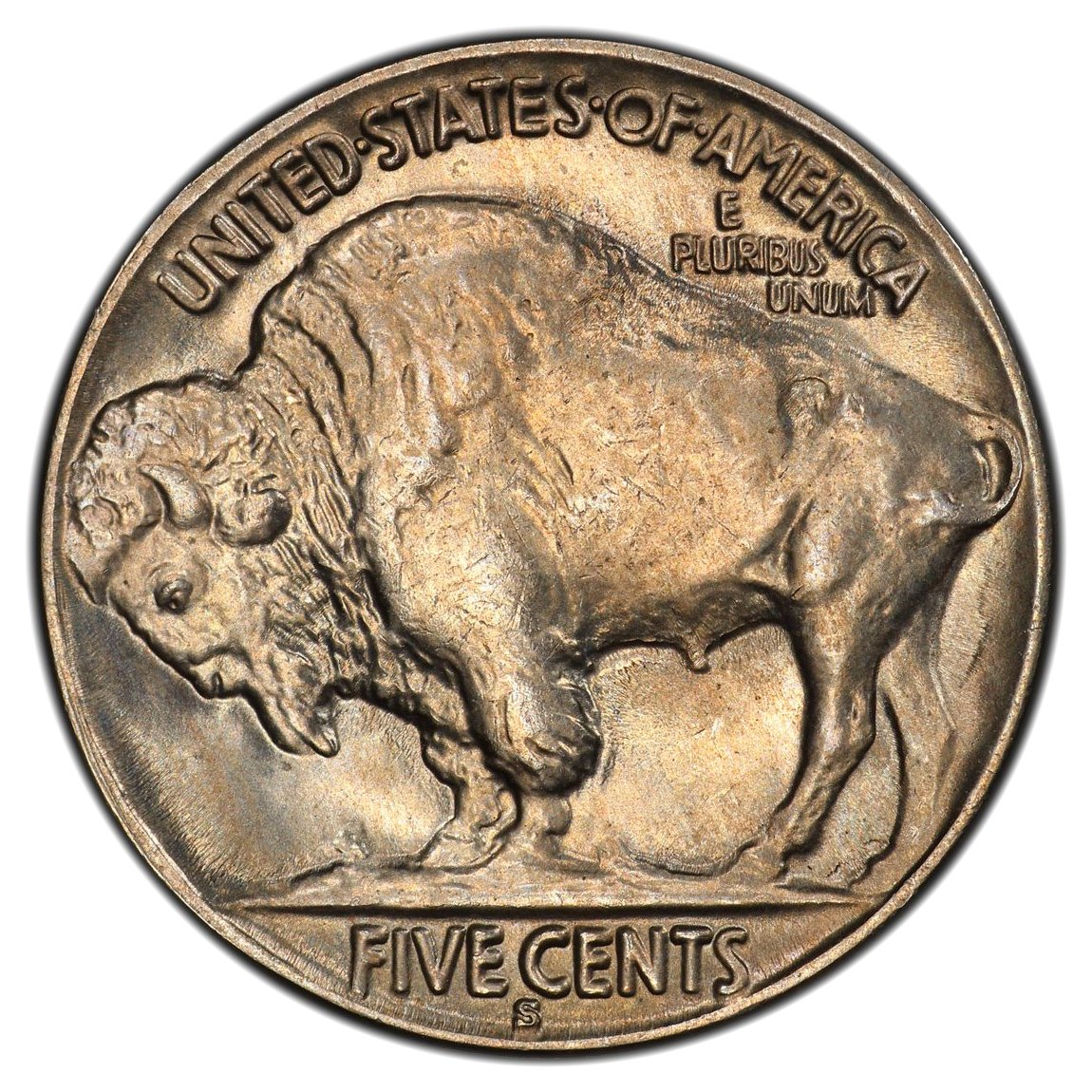
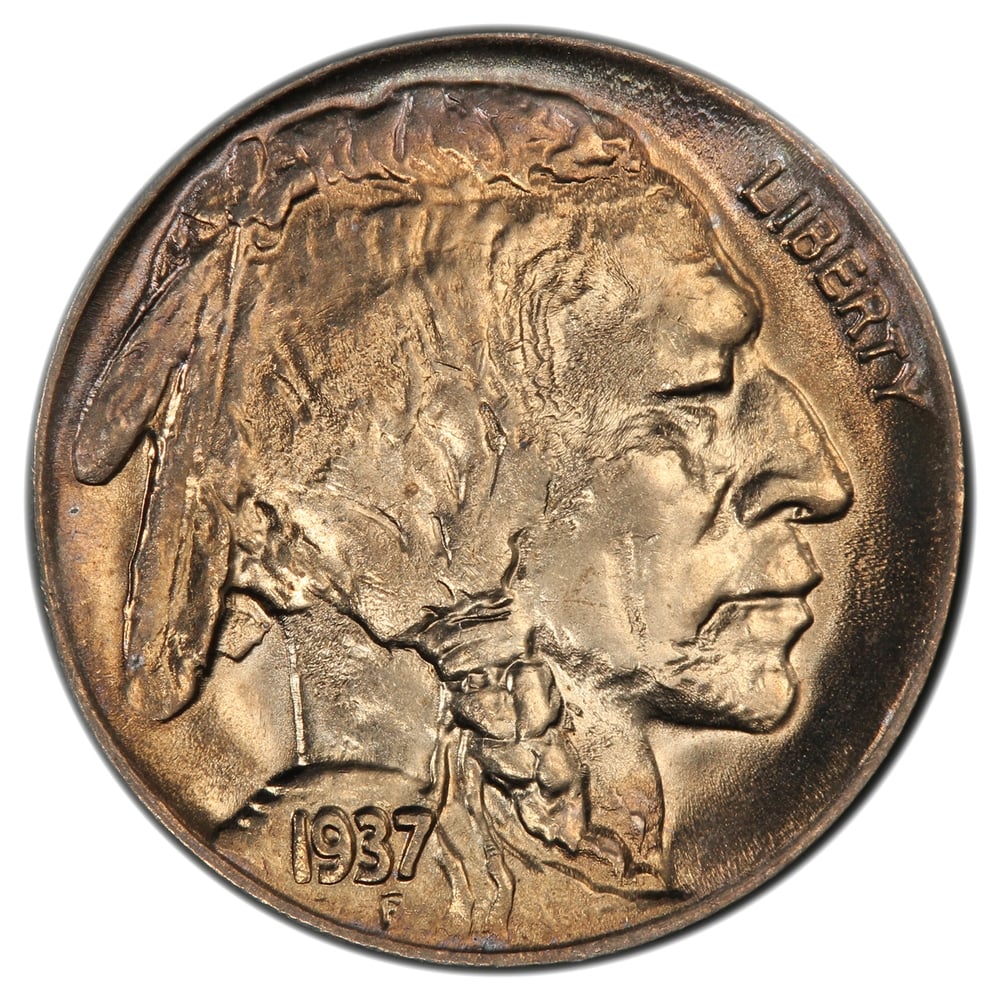
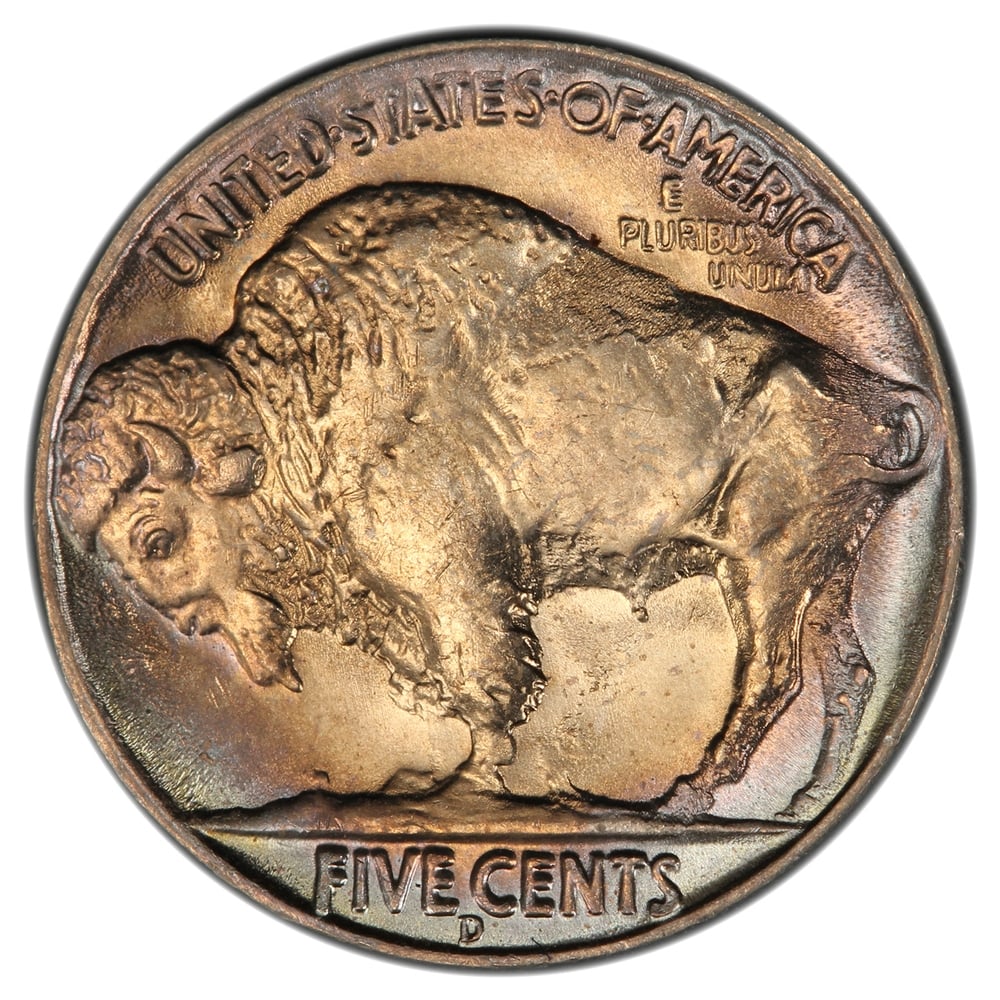
The Buffalo Nickel (or Indian Head Nickel) was the design of the US 5 cent coin from 1913 to 1938, and while this coin was only minted for 25 years it is still possible to find them in circulation. These coins do not contain any silver or gold, and as a result feature relatively stable prices.
The design of the coin was created by sculptor James Earle Fraser, following the momentum of President Theodore Roosevelt's desire to beautify American Coinage.
On the obverse of the coin it features the profile of an Indian; hence the nickname of the Indian head nickel. The Indian featured on the front is actually a compilation of three prominent Native American Indian chiefs: Iron Tail, Two Moons, and John Big Tree. The buffalo portrayed on the reverse or back side of the coin is an American Bison. Many researchers believe the bison is a portrait of Black Diamond, a captive buffalo in the New York City Zoo, however numismatists have not been able to definitively confirm or deny this claim.
Mint marks for this coin are found on the reverse side just below the text FIVE CENTS. Three different mints produced this coin, Philadelphia (no mint mark), Denver (D) and San Francisco (S).
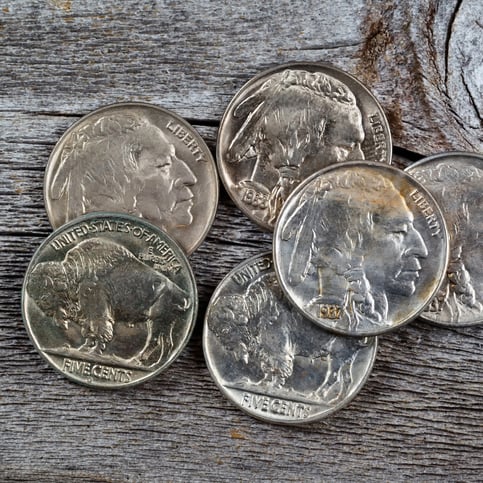
Two problems quickly arose after the buffalo nickel was originally minted, excessive wear on the text FIVE CENTS on the reverse side and excessive wear of the date on the obverse side. The first coins featured the buffalo standing on a mount of dirt with the words “Five Cents” raised higher than the rest of the nickel. This caused the denomination to quickly wear off. Halfway through 1913, the coin’s exterior rim was raised, the denomination text was lowered, and the mound for the buffalo was blended into the coin, all to address this problem. The date problem, which was also a raised portion of the nickel, was never addressed which is why circulated Buffalo Nickels often have a worn date. Buffalo Nickels dating 1913 with the S mint mark on the reverse are some of the rarest.
The buffalo nickel featured many minting errors over its span in circulation. Another often discussed error took place in the last year of production. In the 1937-D mint of the coin, the buffalo was only created with 3 legs. So, this is often referred to as the 3 legged Buffalo Nickel. Coins from this era are extremely collectible, and very rare. Unfortunately, it has become common for people to take 1937-D Buffalo Nickels that had 4 legs and they remove the front leg. This makes certifications and expert advice often necessary for purchasing 3 legged Buffalo Nickels.
Most buffalo nickels have been removed from circulation (by collectors, etc), and therefore it is very rare indeed to find a buffalo nickel in circulation. It is estimated that approximately 1 in 25,000 nickels in circulation may be a buffalo nickel; and most of these will likely have the date completely worn off.
One of the interesting aspects about the buffalo nickel is that it was often used by amateur engravers and the images were altered; and these alterations are often referred to as the hobo nickel. Many of these altered hobo nickels are also very collectible.
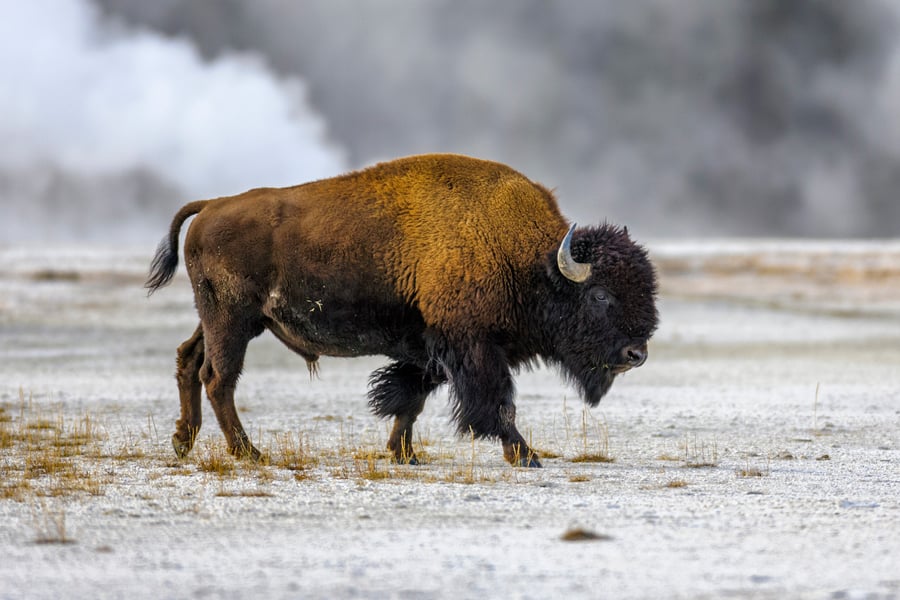
Key dates often featuring high coin values for the buffalo nickel are listed with descriptions of what makes these specific coins valuable below.
Numiis’ tools will serve as a much more exact guide to finding out what your buffalo nickel’s coin value. However below is a descriptive way to determine where you coin may sit on a grading scale.
ID: 25
 1913 Type 1 5c Ms
Mint Strike
1913 Type 1 5c Ms
Mint Strike
 1913 Type 2 5c Ms
Mint Strike
1913 Type 2 5c Ms
Mint Strike
 1913 Type 1 5c Pf
Proof
1913 Type 1 5c Pf
Proof
 1913 Type 2 5c Pf
Proof
1913 Type 2 5c Pf
Proof
 1913 S Type 1 5c Ms
Mint Strike
1913 S Type 1 5c Ms
Mint Strike
 1913 S Type 2 5c Ms
Mint Strike
1913 S Type 2 5c Ms
Mint Strike
 1913 D Type 1 5c Ms
Mint Strike
1913 D Type 1 5c Ms
Mint Strike
 1913 D Type 2 5c Ms
Mint Strike
1913 D Type 2 5c Ms
Mint Strike
 1914 5c Ms
Mint Strike
1914 5c Ms
Mint Strike
 1914 5c Pf
Proof
1914 5c Pf
Proof
 1914 S 5c Ms
Mint Strike
1914 S 5c Ms
Mint Strike
 1914 D 5c Ms
Mint Strike
1914 D 5c Ms
Mint Strike
 1915 5c Ms
Mint Strike
1915 5c Ms
Mint Strike
 1915 5c Pf
Proof
1915 5c Pf
Proof
 1915 S 5c Ms
Mint Strike
1915 S 5c Ms
Mint Strike
 1915 D 5c Ms
Mint Strike
1915 D 5c Ms
Mint Strike
 1916 5c Ms
Mint Strike
1916 5c Ms
Mint Strike
 1916 Doubled Die Obv 5c Ms
Mint Strike
1916 Doubled Die Obv 5c Ms
Mint Strike
 1916 5c Pf
Proof
1916 5c Pf
Proof
 1916 S 5c Ms
Mint Strike
1916 S 5c Ms
Mint Strike
 1916 D 5c Ms
Mint Strike
1916 D 5c Ms
Mint Strike
 1917 5c Ms
Mint Strike
1917 5c Ms
Mint Strike
 1917 S 5c Ms
Mint Strike
1917 S 5c Ms
Mint Strike
 1917 D 5c Ms
Mint Strike
1917 D 5c Ms
Mint Strike
 1918 5c Ms
Mint Strike
1918 5c Ms
Mint Strike
 1918 S 5c Ms
Mint Strike
1918 S 5c Ms
Mint Strike
 1918 D 5c Ms
Mint Strike
1918 D 5c Ms
Mint Strike
 1918/7 D 5c Ms
Mint Strike
1918/7 D 5c Ms
Mint Strike
 1919 5c Ms
Mint Strike
1919 5c Ms
Mint Strike
 1919 S 5c Ms
Mint Strike
1919 S 5c Ms
Mint Strike
 1919 D 5c Ms
Mint Strike
1919 D 5c Ms
Mint Strike
 1920 5c Ms
Mint Strike
1920 5c Ms
Mint Strike
 1920 S 5c Ms
Mint Strike
1920 S 5c Ms
Mint Strike
 1920 D 5c Ms
Mint Strike
1920 D 5c Ms
Mint Strike
 1921 5c Ms
Mint Strike
1921 5c Ms
Mint Strike
 1921 S 5c Ms
Mint Strike
1921 S 5c Ms
Mint Strike
 1923 5c Ms
Mint Strike
1923 5c Ms
Mint Strike
 1923 S 5c Ms
Mint Strike
1923 S 5c Ms
Mint Strike
 1924 5c Ms
Mint Strike
1924 5c Ms
Mint Strike
 1924 S 5c Ms
Mint Strike
1924 S 5c Ms
Mint Strike
 1924 D 5c Ms
Mint Strike
1924 D 5c Ms
Mint Strike
 1925 5c Ms
Mint Strike
1925 5c Ms
Mint Strike
 1925 S 5c Ms
Mint Strike
1925 S 5c Ms
Mint Strike
 1925 D 5c Ms
Mint Strike
1925 D 5c Ms
Mint Strike
 1926 5c Ms
Mint Strike
1926 5c Ms
Mint Strike
 1926 S 5c Ms
Mint Strike
1926 S 5c Ms
Mint Strike
 1926 D 5c Ms
Mint Strike
1926 D 5c Ms
Mint Strike
 1927 5c Ms
Mint Strike
1927 5c Ms
Mint Strike
 1927 5c Sp
Special
1927 5c Sp
Special
 1927 S 5c Ms
Mint Strike
1927 S 5c Ms
Mint Strike
 1927 D 5c Ms
Mint Strike
1927 D 5c Ms
Mint Strike
 1928 5c Ms
Mint Strike
1928 5c Ms
Mint Strike
 1928 S 5c Ms
Mint Strike
1928 S 5c Ms
Mint Strike
 1928 D 5c Ms
Mint Strike
1928 D 5c Ms
Mint Strike
 1929 5c Ms
Mint Strike
1929 5c Ms
Mint Strike
 1929 S 5c Ms
Mint Strike
1929 S 5c Ms
Mint Strike
 1929 D 5c Ms
Mint Strike
1929 D 5c Ms
Mint Strike
 1930 5c Ms
Mint Strike
1930 5c Ms
Mint Strike
 1930 S 5c Ms
Mint Strike
1930 S 5c Ms
Mint Strike
 1931 S 5c Ms
Mint Strike
1931 S 5c Ms
Mint Strike
 1934 5c Ms
Mint Strike
1934 5c Ms
Mint Strike
 1934 D 5c Ms
Mint Strike
1934 D 5c Ms
Mint Strike
 1935 5c Ms
Mint Strike
1935 5c Ms
Mint Strike
 1935 S 5c Ms
Mint Strike
1935 S 5c Ms
Mint Strike
 1935 D 5c Ms
Mint Strike
1935 D 5c Ms
Mint Strike
 1936 5c Ms
Mint Strike
1936 5c Ms
Mint Strike
 1936 Satin 5c Pf
Proof
1936 Satin 5c Pf
Proof
 1936 Brilliant 5c Pf
Proof
1936 Brilliant 5c Pf
Proof
 1936 S 5c Ms
Mint Strike
1936 S 5c Ms
Mint Strike
 1936 D 5c Ms
Mint Strike
1936 D 5c Ms
Mint Strike
 1937 5c Ms
Mint Strike
1937 5c Ms
Mint Strike
 1937 5c Pf
Proof
1937 5c Pf
Proof
 1937 S 5c Ms
Mint Strike
1937 S 5c Ms
Mint Strike
 1937 D 5c Ms
Mint Strike
1937 D 5c Ms
Mint Strike
 1937 D 3 Legs 5c Ms
Mint Strike
1937 D 3 Legs 5c Ms
Mint Strike
 1938 D Buffalo 5c Ms
Mint Strike
1938 D Buffalo 5c Ms
Mint Strike
 1938 D/D Buffalo 5c Ms
Mint Strike
1938 D/D Buffalo 5c Ms
Mint Strike
 1938 D/S Buffalo 5c Ms
Mint Strike
1938 D/S Buffalo 5c Ms
Mint Strike
Sign up for exclusive access to the latest price trends, intelligence, auctions and more!
Gold $1,865.28 |
Silver $25.56 |
Platinum $998.24 |
Palladium $2,326.45
(Updated 2020-12-22)